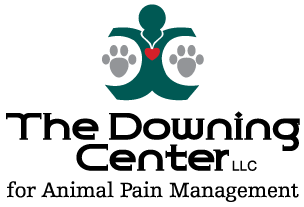Illustrated Articles
-
The pancreas is a vital organ on the right side of the abdomen adjacent to the stomach. It produces enzymes to assist in food digestion and hormones such as insulin, which regulates blood sugar or glucose metabolism. When the pancreas becomes inflamed, the condition is called pancreatitis. Common clinical signs include decreased appetite, nausea, vomiting, lethargy, diarrhea, and abdominal pain. If the attack is severe, acute shock or death may occur. Successful pancreatitis management will depend on early diagnosis and prompt medical therapy.
-
Pancreas-specific lipase is a form of lipase produced only in the pancreas and is highly specific to the pancreas. Blood values increase only when there is pancreatic inflammation. There is now a version of the fPLI test that can be used in-clinic (SNAP fPL© from IDEXX). Ideally, the sample should also be sent to the laboratory to get an actual value of fPLI to help with treatment and monitoring.
-
The pancreas is a vital organ that produces enzymes to assist in food digestion and hormones such as insulin, which regulates blood sugar or glucose metabolism. Pancreatitis is inflammation of the pancreas. Pancreatitis commonly occurs in dogs and may be acute or chronic.
-
Pancreas-specific lipase is a form of lipase produced only in the pancreas and is highly specific to the pancreas. Blood values increase only when there is pancreatic inflammation. A version of the cPLI test can now be used in-clinic (SNAP fPL© from IDEXX). Ideally, the sample should also be sent to the laboratory to get an actual value of cPLI to help with treatment and monitoring.
-
Pancrelipase is given by mouth and is used on and off label to treat exocrine pancreatic enzyme deficiency in dogs, cats, and birds. It is also used to treat fur balls in rabbits. Give as directed by your veterinarian. Common side effects at higher doses include diarrhea, cramping, gas, or vomiting. Do not use in pets that are allergic to pork. If a negative reaction occurs, please call your veterinary office.
-
Pandora syndrome affects multiple organ systems, including the urinary tract. The term is often used synonymously with Feline Idiopathic Cystitis (FIC), but FIC is only one component of Pandora syndrome. It is believed to be related to chronic stress. This article discusses causes, signs, diagnosis, treatment, and prognosis for cats with this condition.
-
Panniculitis is a localized inflammation of the tissues under the skin, causing a firm swelling (nodule) that may ulcerate and drain fluid. It is a common problem in cats and is less common in dogs. There are several causes of panniculitis, but in younger animals with a single lump, the cause is often blunt trauma and, in cats, it is often caused by bite wounds from fighting. An accurate diagnosis relies on the microscopic examination of tissue and the most common treatment is the surgical removal of the lump(s).
-
Chronic superficial keratitis (CSK), or pannus, is a potentially blinding disease affecting the cornea. Any dog breed can be affected by pannus, but it is predominantly seen in German shepherds, Belgian shepherds, and border collies. Diagnosis is based on medical history and clinical signs. Treatment involves using topical corticosteroids or other immune-modulating drugs. If diagnosed early and treatment plans are followed, many dogs can have a good prognosis and live a normal life.
-
Panosteitis is a painful inflammation of the outer surface or shaft of one or more long bones of the legs. It is sometimes called growing pains. Panosteitis is a condition that affects young, rapidly growing dogs. Panosteitis will be suspected if the patient shows pain when pressure is applied to the affected bone(s). The diagnosis is confirmed by X-rays, which usually show a characteristic increase in the density of the affected bones. Although this disease will spontaneously resolve, during episodes of lameness the condition is very painful. At these times, treatment is supportive, using pain medication and anti-inflammatory drugs as needed.
-
Papillomas are benign, sometimes multiple, tumors caused by viruses. They are commonly known as warts. The virus is transmitted through direct contact from an infected pet or the pet’s environment (e.g., toys, food bowls, or bedding) and gain access to the body when the skin becomes softened by moisture, through cuts and abrasions, or with the assistance of insects. Pets with immature immune systems such as young dogs and puppies, and those that are immune compromised, are more prone to developing papilloma tumors. The tumors often disappear within 1-2 months because the animal slowly develops an immunity to them. However, sometimes they persist, and surgical removal is necessary.


